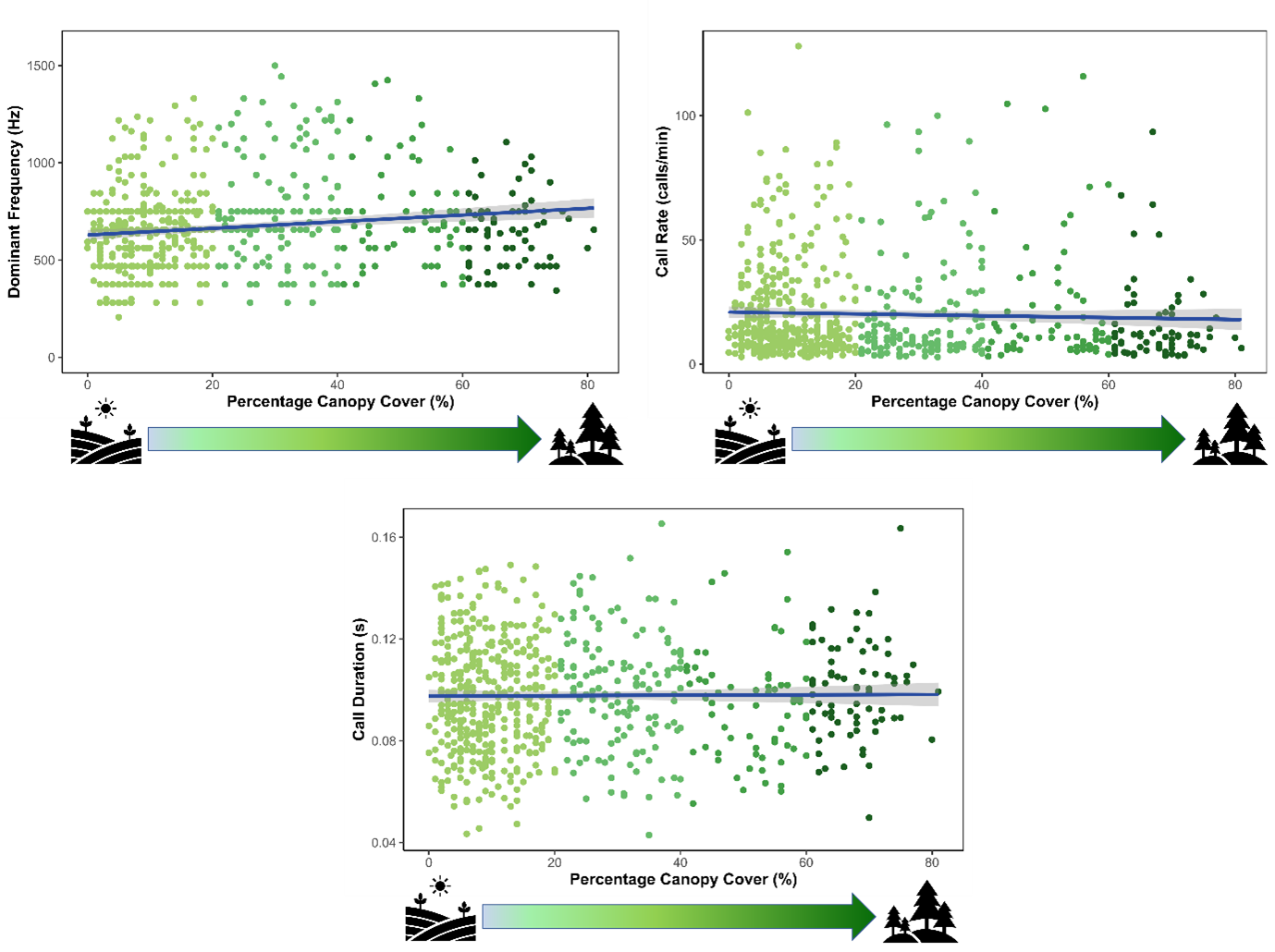Does the venue matter for a banjo frog gig?
Using FrogID citizen science data, we recently set out to discover if habitat can influence the advertisement calls of frogs!
The advertisement calls of animals are known to be highly variable, not only between different species but also between individuals of the same species. In other words, animals have accents! But why is that the case? Numerous theories have been put forward to explain how and why animal calls can vary so much among and within a species, yet our understanding is still incomplete.
Audio of Banjo Frog (Limnodynastes dumerilii)
One factor that may influence animal calls is the physical structure of the environment (e.g., the height, density, and structure of trees, shrubs, and grasses). This is because the surrounding environment plays an important role in the transmission of acoustic signals by distorting and reflecting sound waves, causing echoes and decreasing the distance the call can be heard from. The effect of the surrounding habitat can influence calls so much, that calls might not reach their intended audience – a male calling out for a mate may not be heard by nearby females. However, habitat effects can be counteracted by subtle changes in the pitch, duration, and rate at which an animal calls. Because of this, the physical environment is thought to be at least partially responsible for the evolution of variation in advertisement calls. But just how true is this theory?

© Australian Museum
Recently, we set out to determine the extent to which the physical environment influences variation in frog advertisement calls. To do so, we tested whether differences exist between the calls of frogs in different habitats. For our research, we selected a widely-dispersed group of Australia frogs – banjo frogs. The Eastern Banjo Frog (Limnodynastes dumerilii), Western Banjo Frog (Limnodynastes dorsalis), Northern Banjo Frog (Limnodynastes terraereginae), and Giant Banjo Frog (Limnodynastes interioris) are a group of four closely related species – known collectively as “banjo frogs”. Banjo frogs occupy a variety of habitats and are found extensively throughout eastern and south-western Australia.
To capture the full extent of variation in banjo frog calls, we needed to analyse advertisement calls throughout their entire range and from many different habitats. However, obtaining acoustic data from frogs across such a large geographic area would require tremendous amounts of time and effort. Fortunately, thanks to the work of all the citizen scientists who have recorded banjo frogs using the Australian Museum’s FrogID app, we had thousands of recordings of banjo frog calls at our fingertips. Using data collected through the FrogID project, we analysed nearly 700 banjo frog calls from across their entire range, covering an area of over 1.7 million km2, from Tasmania to Far North Queensland, and everywhere in between.

© Australian Museum
Our analysis of citizen science data revealed that while banjo frog advertisement calls are superficially very similar, consisting of a single, loud “bonk”, there is actually an incredible amount of variation in the pitch and duration of each individual banjo frog call. Interestingly, we found that this variation was not strongly linked to habitat structure, suggesting that the physical environment is not the main factor influencing banjo frog advertisement calls.

© Australian Museum
So, what could be driving such high variation in banjo frog advertisement calls? Likely, the evolution of banjo frog advertisement calls has been influenced by the interplay between a multitude of factors, including more fine-scale features of the environment (e.g. microclimate and microhabitat), acoustic competition from other frogs, and noise interference from wind, water, and other animals. However, until further research is undertaken, we are unsure just how all these factors contribute to frog call variation. What we have discovered is that citizen science data provides a never-before opportunity to examine important ecological theories across a huge spatial scale. And that the venue – a dense forest or an open plain – doesn’t matter for a banjo frog gig!
Grace Gillard, Technical Officer, Herpetology, Australian Museum Research Institute.
Dr Jodi Rowley, Curator, Amphibian and Reptile Conservation Biology, Australian Museum Research Institute & UNSW Sydney.
More information
Gillard, G.L. & Rowley. J.J.L. (2023). Assessment of the acoustic adaptation hypothesis in frogs using large-scale citizen science data. Journal of Zoology. https://doi.org/10.1111/jzo.13088
Acknowledgements
We would like to thank the Citizen Science Grants of the Australian Government and the Impact Grants program of IBM Australia for providing funding and resources to help build the initial FrogID App; the generous donors who have provided funding for the project including the Vonwiller Foundation; the NSW Biodiversity Conservation Trust and the Department of Planning and Environment – Water as Supporting Partners; the Museum and Art Gallery of the Northern Territory, Museums Victoria, Queensland Museum, South Australian Museum, Tasmanian Museum and Art Gallery, and Western Australian Museum as FrogID partner museums; the many Australian Museum staff and volunteers who make up the FrogID team; and, most importantly, the thousands of citizen scientists across Australia who have volunteered their time to record frogs.












